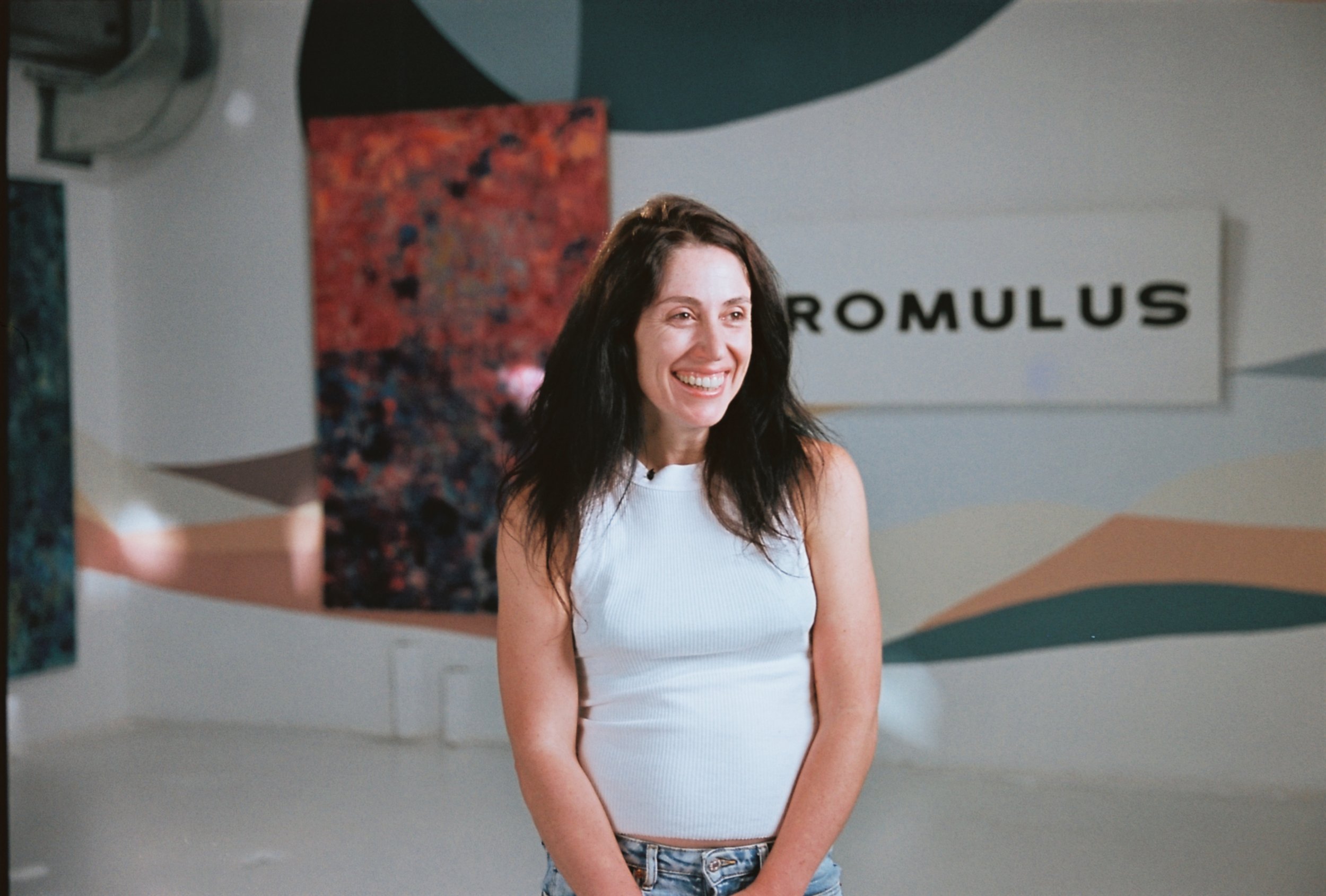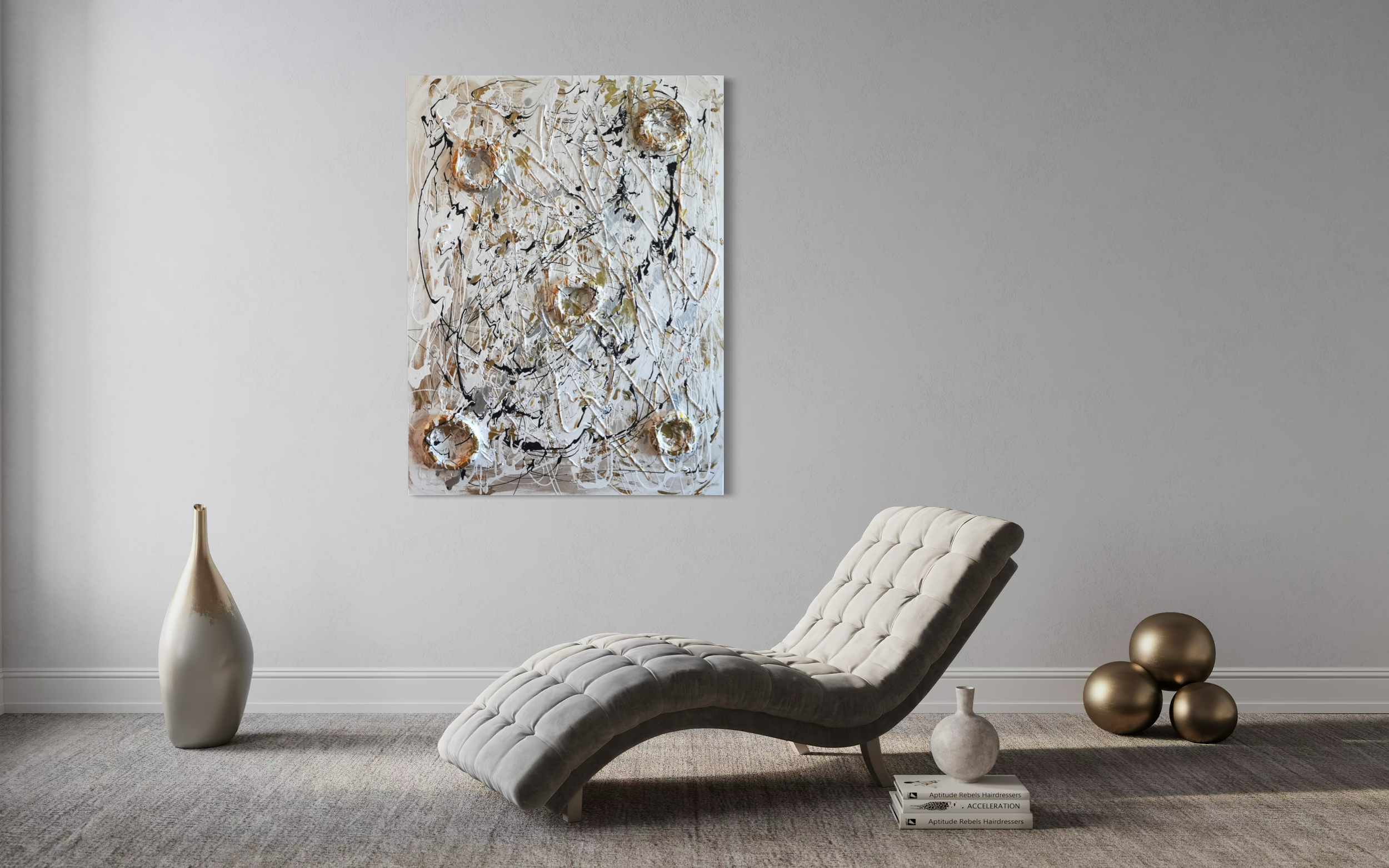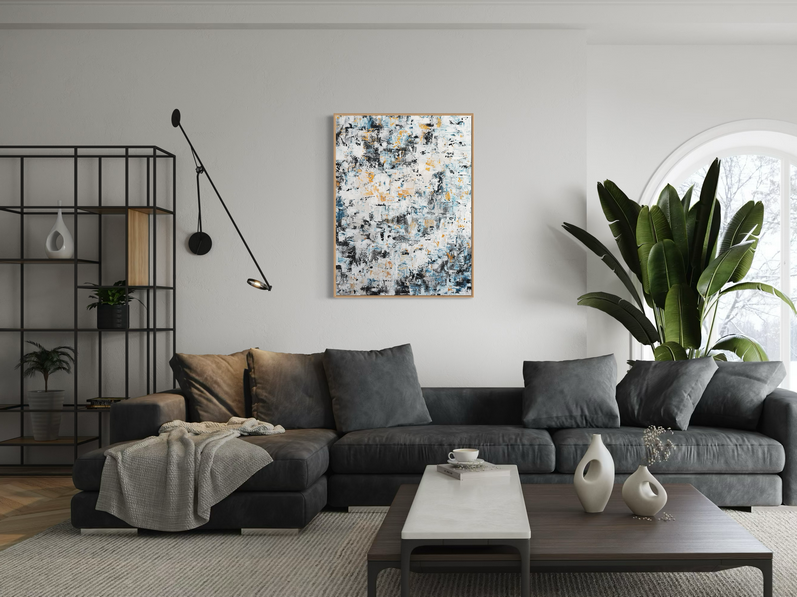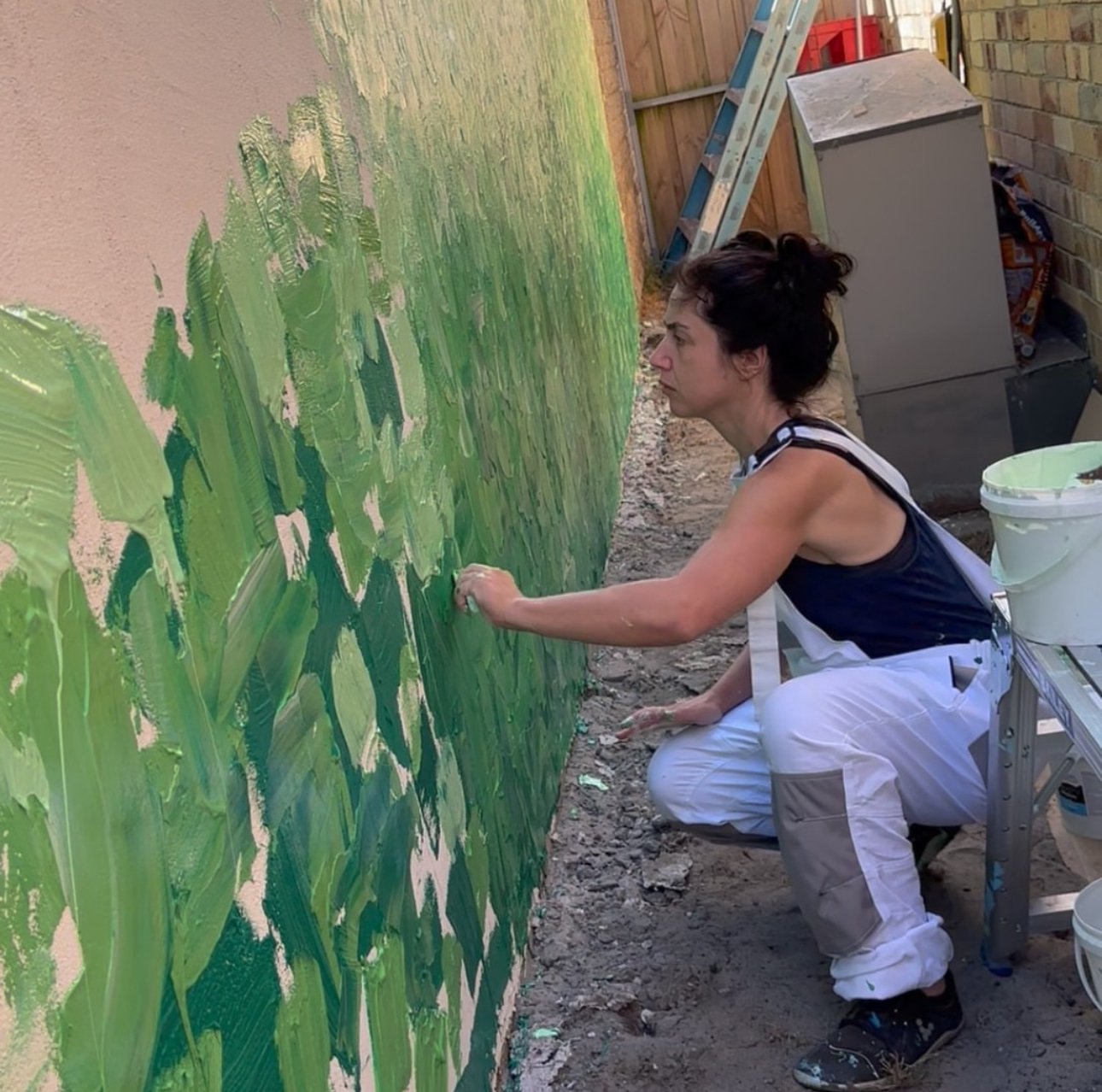Art, Design, and the Quiet Power of Surfaces
By Angelina Mirabito | Presented at Melbourne Design Week
Art and design live in conversation with each other—not as opposites, but interdependently in shaping how we feel in a space.
As a contemporary abstract artist working with texture, light, and colour, I’m drawn to the subtle but powerful ways materials shape experience. My practice isn’t academic or formulaic; it’s intuitive, layered, and often raw. It’s not just about creating something to look at, but something to feel—a surface that might catch light, cast shadow, or offer some kind of emotional release you didn’t know you needed.
When I think about design, I see a kind of discipline and restraint—a framework that holds and guides us. Art, on the other hand, is where wildness and unpredictability live. It’s where meaning arrives not through logic, but through sensation. And when those two worlds meet with care, something alchemical can happen. Space becomes more than functional—it becomes transformative.
On Texture, Light, and Improvisation
Early on many of my materials weren’t chosen; they were what I had. As time progressed I’ve been able to work with premium materials. However, for certain pieces and effects, I’ve returned time and again to house paint—not just for practicality, but because of how it behaves. What starts as necessity becomes improvisation. What begins as limitation becomes discovery.
Texture, for me, isn’t just surface. It’s emotion made visible. Working with palette knives, I sculpt layers that rise off the canvas. The tools I choose—specific shapes and sizes—aren’t just instruments; they’re collaborators. And I rarely mix colour off the canvas. It happens on the surface, during the process, allowing accidents to become intention.
Art as Emotional Architecture
Texture interacts with light, and light changes everything. I work under adjustable lighting because I know that once the work leaves my studio, I lose control over how it’s seen. That’s the vulnerability of visual art—how it’s lit, placed, or contextualised will alter the viewer’s entire experience of it.
I often think of this in architectural terms. Even the flattest white wall has texture—barely visible, but enough to hold light differently. Add art to that wall, and the space shifts. The relationship between wall, light, and work becomes a kind of quiet choreography. And our bodies notice it, even if our minds don’t.
Designing the World We Want—With What We Have
The exhibition I created for Melbourne Design Week took place in an unfinished 200m² shell of a space—no sink, one power source, exposed poles and brick, and a hanging mural that couldn’t be removed. Some would see limitations. I saw opportunity.
Together with Scott Ross and Sam Galloway, we turned that space into an open studio and living, breathing gallery. We rearranged the works at least five times. We mounted art on poles, leaned into the rawness of the space, and used light as a design tool. The imperfections became part of the narrative. The outcome wasn’t polished—but it was alive.
In that sense, we weren’t just curating an exhibition. We were engaging in space activation. Using what was already there, we transformed how people moved through and felt within that environment. And that’s the heart of the work I care most about—creating atmospheres that invite people to feel something real.
Art and Design as Dual Intelligence
I often think of design as the prefrontal cortex—logical, planned, essential—and art as the amygdala—emotional, instinctive, unpredictable. Both are vital. Both shape how we experience ourselves and our surroundings. When they come together, something resonates. Something reflects back a deeper, often unnameable truth. It may not always be conventionally beautiful—but it feels true.
And that truth can be healing.
Much of my sensitivity to space comes from years spent recovering from complex trauma. There were long stretches when I was housebound, where all I could do was observe. Texture, light, spatial layout—these details became my language, long before I had words for what I was doing.
So when I say art and spatial design changed my life, I mean it quite literally. They gave form to what I was feeling. They helped me recover a relationship with the world that felt broken. And now, through my work, I offer that same potential for resonance to others
Final Thoughts
To “Design the world you want,” as Melbourne Design Week so beautifully invites us to consider, is not always about grand architectural gestures. Sometimes it’s about rearranging what’s already in front of you. Looking closer. Feeling your way through.
It’s about honouring instinct, texture, and emotion—not as afterthoughts, but as vital parts of the design process.
Art doesn’t always have to explain itself. Sometimes, it just needs to be felt.
And that, I believe, is where transformation begins.
Studio & Gallery Hours
• Weekends: 12 PM – 6 PM
• Weekdays (Wed–Fri): 12 PM – 7 PM
(By appointment outside of these hours)
• Includes Open Studio and Gallery Access
Ground floor, tower B lobby at The Gladstone, located at 15-85 Gladstone Street, South Melbourne, 3205.
• Wheelchair accessible
• Low-sensory / relaxed environment
• Seating available
• Accessible bathroom






